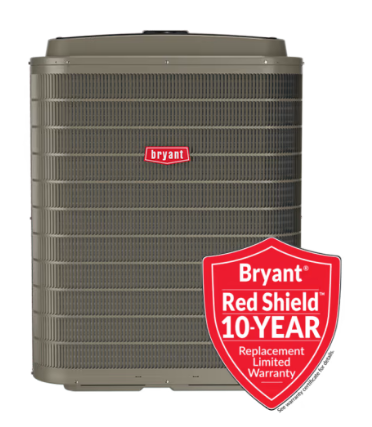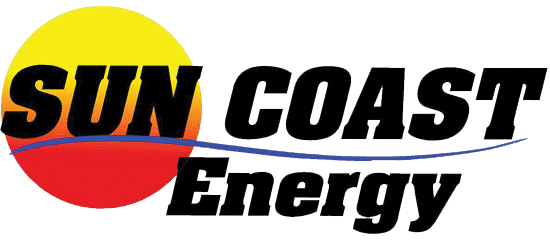WHAT IS A HEAT PUMP AND HOW DOES IT WORK
So, what is a heat pump? A heat pump is part of a home heating and cooling system and is installed outside your home. Like an air conditioner such as central air, it can cool your home, but it’s also capable of providing heat. In cooler months, a heat pump pulls heat from the cold outdoor air and transfers it indoors, and in warmer months, it pulls heat out of indoor air to cool your home. They are powered by electricity and transfer heat using refrigerant to provide comfort all year round. Because they handle both cooling and heating, homeowners may not need to install separate systems to heat their homes. In colder climates, an electric heat strip can be added to the indoor fan coil for additional capabilities. Heat pumps do not burn fossil fuel like furnaces do, making them more environmentally friendly.

WHAT TYPES OF HEAT PUMPS ARE THERE?
The two most common types of heat pumps are air-source and ground-source. Air-source heat pumps transfer heat between indoor air and outdoor air, and are more popular for residential heating and cooling.
Ground-source heat pumps, sometimes called geothermal heat pumps, transfer heat between the air inside your home and the ground outside. These are more expensive to install but are typically more efficient and have a lower operating cost due to the consistency of the ground temperature throughout the year.
HOW DOES A HEAT PUMP WORK?
How does a heat pump work? Heat pumps transfer heat from one place to another by different air or heat sources. Air source heat pumps move heat between the air inside a home and the air outside a home, while ground source heat pumps (known as geothermal heat pumps) transfer heat between the air inside a home and the ground outside a home. We will focus on air source heat pumps, but the basic operation is the same for both.
HOW DOES A HEAT PUMP COOL AND HEAT?
Heat pumps do not create heat. They redistribute heat from the air or ground and use a refrigerant that circulates between the indoor fan coil (air handler) unit and the outdoor compressor to transfer the heat.
In cooling mode, a heat pump absorbs heat inside your home and releases it outdoors. In heating mode, the heat pump absorbs heat from the ground or outside air (even cold air) and releases it indoors.
HOW A HEAT PUMP WORKS - COOLING MODE
One of the most important things to understand about heat pump operation and the process of transferring heat is that heat energy naturally wants to move to areas with lower temperatures and less pressure. Heat pumps rely on this physical property, putting heat in contact with cooler, lower pressure environments so that the heat can naturally transfer. This is how a heat pump works.
HOW A HEAT PUMP WORKS - HEATING MODE
A Heat pump in heating mode operates just like cooling mode, except that the flow of refrigerant is reversed by the aptly named reversing valve. The flow reversal means that the heating source becomes the outside air (even when outdoor temperatures are low) and the heat energy is released inside the home. The outside coil now has the function of an evaporator, and the indoor coil now has the role of the condenser.
The physics of the process are the same. Heat energy is absorbed in the outdoor unit by cool liquid refrigerant, turning it into cold gas. Pressure is then applied to the cold gas, turning it to hot gas. The hot gas is cooled in the indoor unit by passing air, heating the air and condensing the the gas to warm liquid. The warm liquid is relieved of pressure as it enters the outdoor unit, turning it to cool liquid and renewing the cycle.


